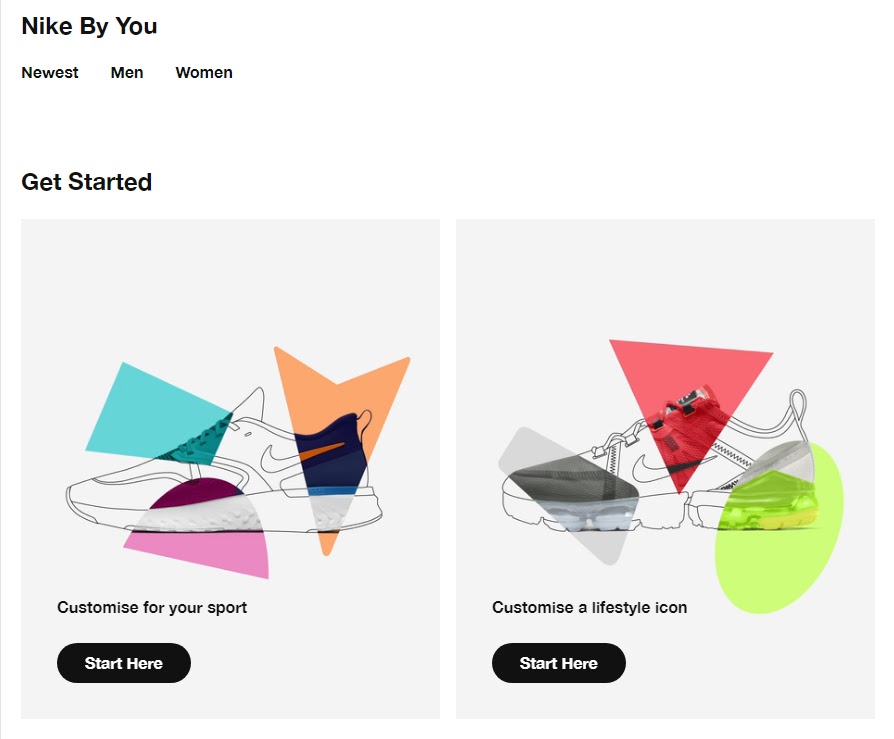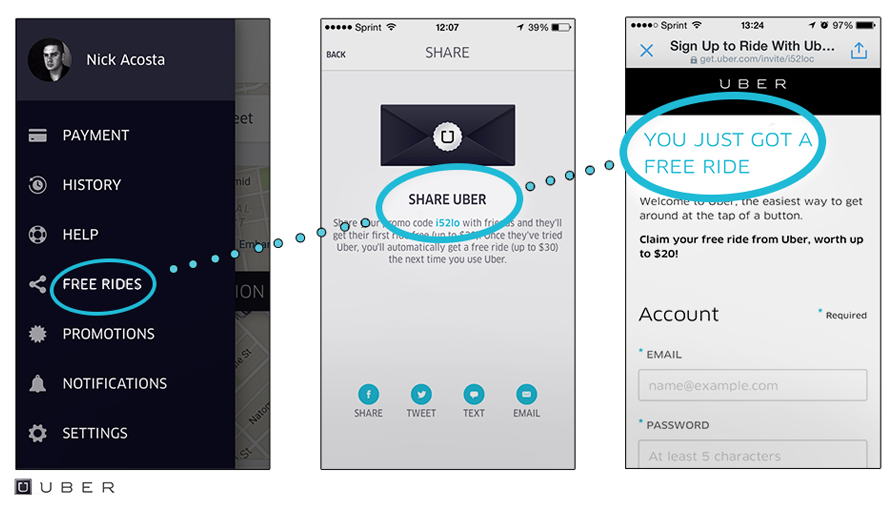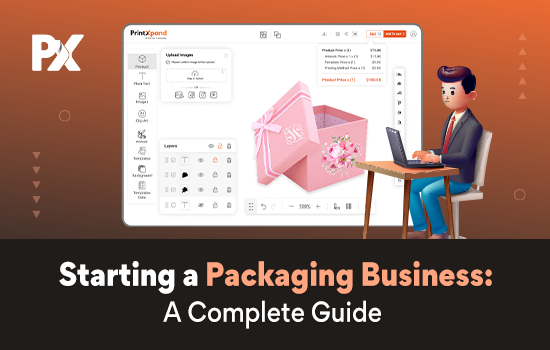
As a business owner, you have already realized that focusing on maximizing revenue is not the only way to grow. It is indeed paramount to dig deeper, analyze and understand how you can increase your profit margin and grow the returns.
The primary analysis to increase the profit margins on your product sales lies in operational effectiveness, your vendor-supplier network, and price manipulation as per the current competition. The relevance of these factors and the challenges they bring largely depend on your business models.
This is why companies should know how to analyze various facets of profitability including effective use of resources, operational optimization, customer loyalty leading to a longer lifetime value (LTV) of customers, and so on.
Hence, we bring you a simplified guide to frame the most effective plan to improve your profit margins. A good profit margin is an indicator that your company is running profitable operations. But how much is considered good? Let us analyze it through some stats.
What is a Good Profit Margin for Retail?
According to a study of 75 web-based retail firms by NYU Stern School of Business, a good gross profit margin is around 42.53%. The net profit margin was found to be 4.95%.
A 10% net profit margin is deemed average in the online shopping world, while a 20% margin is deemed high and 5% is considered low. To reach a gross profit margin as high as 20%, you’ll have to be creative, mindful, and take risks while implementing a change to your business model.
In this guide, we’ll peculiarly address questions like “How to increase profits”, “How to increase profit margin”, “What is a good profit margin for retail”, and “How to improve profits”. Turning a profit is the main point of running a business after all.
Here are 10 fool-proof ways to increase profit margins.
- Exceptional Products to Improve Profit Margins
- Reduce Operational Costs
- Pay Attention to Your Popular Products
- Increase Your Brand Value and Improve Profits
- Increase Profit Margins by Providing Personalized Experience
- Create Loyalty Programs to Increase Profit Margins
- Leverage Your Existing Customer Base
- Outstanding Customer Service for The Win
- Improve Inventory Visibility and Avoid Markdowns
- Smart and Sensible Discount Offers
1. Exceptional Products to Improve eCommerce Profit Margins
The Internet economy is a monopoly business. More than 80% revenue of eCommerce is sucked up by the big boys of the industry. For a mid-sized eCommerce, the margins are thin because these websites do not have anything unique to offer their customers. And, even these big boys and their higher market share do not always reflect an A++ balance sheet.
Offering something unique is not an option anymore for a mid-sized eCommerce website. It is necessary if you are considering higher margins, value customers, and more importantly any sort of loyalty from your customers.
A study by Deloitte states that 36% of consumers desire customized products. It also states that 1 in 5 of these customers is okay with paying 20% more for a customized product that exactly caters to their needs. 48% of customers are ready to extend the wait time when offered customized products. Many big-scale industries have started offering customization on their products. Here’s a prominent example.
Example: Nike

Nike’s shoe customization services: Nike by you
Nike allows their customers to personalize and design their Nike merchandise as they want. They provide customization on footwear as well as sportswear. Customers can choose which area of the shoe they want to personalize. They can select from a wide range of colors and fabrics. The customers can also choose from a wide range of pre-made designs or buy the designs made by other customers.
Hence, customization is not an option, but a necessity for eCommerce retailers. Without a doubt, the love towards product customization is evident. As a result, 79% of digital marketers in retail are investing in personalization tools, more than any other industry. Deliver a unique experience and bring them back to your store every time they want something new. In addition to profits, customization also drives customer loyalty and increases customer satisfaction.

So if you’re looking for a customization tool, worry not! Because PrintXpand’ product design tool is at your rescue. PrintXpand provides a fully-responsive product design tool that lets you customize products on every printable material. You can charge an add-on price for customers to avail the benefits of customization tools. Features like element-based pricing also help you improve your profit margin. Explore more about PrintXpand’ product design tool.
2. Reduce Operational Costs
Efficient operations reduce costs and hence contribute to increasing profits. For this to be true the prices and number of sales must remain constant. You also need to take care that the cost reduction must not lower the quality of the company’s products. Otherwise, you might have to lower the overall prices to maintain the number of sales. This can lead to major problems and may end up wiping out revenue and result in a loss.
It may also create a negative impact on your brand image. This may lead to a gradual loss of market share over time and make it impossible for you to maintain sales figures. However, if your company efficiently can cut costs without affecting quality, sales price, and sales figure, it can lead you to a path of higher profitability.
Here are some pointers that can help you reduce operating costs and increase your profit margin.
Negotiate with Suppliers
Build up closer and reliable relationships with your suppliers. Prove them that you’re a strong seller. Then use your history as an efficient business as a bargaining chip to negotiate for better prices from your suppliers. At the end of the day, your suppliers don’t want to lose your business (particularly if you’re good at selling their products!). There’s nothing wrong with using your expertise as part of your operational cost reduction strategy.
Consider Dropshipping
Dropshipping is one of the best ways to go about it if you’re aiming to reduce costs. Since drop shippers do not store any inventory themselves, they save a ton of money that they would otherwise spend on owning, running, and maintaining a warehouse.
Dropshipping is a favored eCommerce model because it has very low overhead costs compared to other e-commerce business models. It allows you to sell a limitless number of products and offers a lot of flexibility when it comes to ordering management.
3. Pay Attention to Your Popular Products
Keep analyzing your products and their prices. Product price regulation and optimization are a must to increase profit. Best-selling products keep your business afloat and help you maintain a bottom-line.
Popular products help you increase the basket size or average order value from customers. And turns out it is a great way to improve your profits. Once you lure them to your website, all you have to do is find a way to maximize their speed. All you need to do is upselling and cross-selling.
“Your most profitable products in the shop window and the best area customers naturally go to in the store so as many eyeballs see them as possible. Another tactic is to put your best sellers and upsells on the front of your website for impulse buys to increase average order value”
– Adam Watson, director of Decorelo
Example: Amazon’s recommendations leading to impulse buying.

Impulsive buying products can boost your revenue on Amazon
Another technique is to encourage customers to buy more products by suggesting the products that are likely to purchase together. Then, after a customer commits to purchasing a product, suggest and encourage them to increase their spending by recommending relevant items.
“Someone who purchases from you has already been qualified. They have engaged with your brand and, while it may sound obvious, they are significantly more receptive to offers and product advertising. For that reason, it makes complete sense to encourage them to spend more.”
– Matthew de Noronha, Head of SEO at Eastside Co.
Example: Amazon’s suggestion algorithm

Amazon’s frequently bought together algorithm
4. Increase Your Brand Value and Improve Profits
To improve your profits, you need to elevate your brand and improve the perceived value of your merchandise. A major aspect attached to brand value is the trust with which customers make their purchases. The more the customers trust your brands, the more your profit increases.
Branding
Branding is a good strategy to improve profits. For example, Coca-Cola has established an identity in a way that they can cost a significantly higher price as compared to their competitors. In addition to that, their market share keeps increasing simultaneously. This helps them maintain their premium market status even in economic downturns.
Hence, focusing on branding can increase revenues up to a great extent. It solidifies your customer base and creates the surest path to long-term prosperity. The brand value generally works on two aspects:
I. What does the brand mean for the customer?
For example, cosmetic retailers have the best margins in retail. According to experts, one reason behind this is the fact that cosmetics brands create personal connections with the customers.
Cosmetics products make people feel better about themselves and foster lucrative profit margins. Depending on the brand, packaging, and marketing of cosmetic products, the profit margin on each item can be high. You can implement similar branding models for your products as well.
II. Omnichannel eCommerce marketing strategy
HubSpot describes omnichannel marketing strategy as, “the ability of a business to deliver a consistent experience across various channels.” The distribution of products — how and where you sell what you sell is a marketing strategy of its own.
BigCommerce’s omnichannel retail report tells us that the overall online spending is even between marketplaces, large retailers, web, and category-specific stores.

Take an example of what happened in social media over the last decade. Multiple social media platforms turned into business platforms.
Facebook provides targeted marketing and promotional tools. It also provides customers’ business page, where customers can buy products there and then. Pinterest has the option of a buyable pin so that customers do not have to visit the original site. This is omnichannel marketing.
Omnichannel offerings provide a straight-forward purchase option to customers. The easy and hassle-free checkout ensures a rise in profit margins of businesses as well. Hence, it is a must-have in this day and age to increase profits.
5. Increase Profit Margins by Providing Personalized Experience
Popular retailers are using personalization to make the customer experience easy, intuitive, and seamless across multiple touchpoints. The main goal of companies must be to use technology to personalize critical touchpoints in a way that best drives value for the customer and retailer.
The size of the personalization opportunities varies from retailer to retailer based on their capabilities. A study by BCG and Google, states that customers increasingly prefer a shopping experience that’s personalized, fast and that helps them make purchase decisions.
Ecommerce retailers must increasingly focus on tailoring the individual shopping experience of the customers by using a combination of first-party customer data (which a company collects from its customers or audience) and third-party customer data (from external organizations).
A highly personalized experience can result in significant benefits to the retailers. A study states that customers were 110% more likely to add additional items to their cart when the shopping experience was highly personalized. They’re also 40% more likely to spend more on products than they had originally planned to buy.
Example: Product Categories Based on Browsing Behavior
When you visit Amazon’s official site and navigate to your account home page, you’ll find categories based on your previous onsite search and browsing behavior.
According to Business Insider, this kind of personalization can increase sales by up to 10%. Ecommerce retailers can implement this simply by using a product recommendation engine.
Example: Personalize Search Results
Ecommerce retailers can use what they know about their customers’ previous behavior to show the most relevant results when they search.

Nike’s personalized search result
6. Create Loyalty Programs to Increase Profit Margins
Nothing adds more value to your business than your loyal customers. For most companies, the average customer loyalty rate is below 20%. But this 20% of the audience provides up to 65% of the total sales revenue. Since it is 7x times easier to retain a customer than acquire a new one, if you focus more on existing customers, they’ll help you improve eCommerce profits.
Loyal customers tend to spend more and even share their experiences. They also publicly tell people about your products and services. Hence, free publicity. Returning customers saves you marketing money as you do not have to convert them from prospects into customers.
One way to do so is by providing outstanding customer service. A study proves that 93% of customers are likely to make repeat purchases with brands offering outstanding customer service. You may also consider framing multiple customer loyalty programs.
A customer loyalty program is a marketing strategy that rewards regular customers who frequently engage with the brand. This strategy runs on the psychology that “the more loyal the customers, the more benefits they get”. You can entice them with exclusive offers, rewards, benefits, discounts, and so on. This builds a cycle of purchase from the existing customers.
Example: Nike Plus
Nike’s loyalty program Nike Plus allows its members to access various benefits like:
- Unlocking the member-only gear
- Access to Nike experts on demand
- Exclusive personalized shop
- The “Reserved for you” recommendations
- Expert recommendation
- Same day delivery

7. Leverage Your Existing Customer Base
Customer acquisition is the toughest and sucks up a major chunk of your revenue. The customer acquisition process is a tough one and it costs you multiple dollars to acquire one customer. Look at the below stats.

The average retailers’ cost to acquire customers across ten different industries
The cost shown in the above graph is the cost to acquire one customer. Think about it for a second. It costs $1000 to acquire 100 new customers for a well-running retail eCommerce store. This means whenever you lose a customer you lose $10. This could be a serious dent in your profit margins. Hence, you need more strategies for customer retention. There are multiple ways in which you could do this. Here are the three most effective ways:
1. Reward Loyalty
Reward your loyal customers. Offer freebies or incentives to keep people coming back. Offer them customer loyalty cards for the next time they make purchases. When you do so, customers become cheerleaders for your business and you get free-publicity too.
2. Give Them Lower-Cost Add-On Options
Take McDonald for example. It is a burger joint, but it makes money on all the other items that it sells along with the burger. They know that a burger won’t taste as good as it would with fried and cold-drink. And they’ve used that formula to build a more than $163 billion company. This is precisely how they upsell.

McDonald’s monopoly sales funnel
You can provide customers multiple options to add items that accompany your product. For example, if you’re into the t-shirt selling a business, you might as well provide customization as an add-on.
3. Leverage Existing Relations to Make New Ones
Offering referrals works wonders to increase profit. It is the biggest part of any eCommerce business. Offer referral points and benefits to your customers. Apps like Uber generally use the referral model for inexpensive user acquisition.
Now you may think that referrals cost a lot of money, but you’re wrong. Not only is it inexpensive, but also offers high ROI. The only major cost of your referral program is the amount you’re offering to your current users and new users aren’t as large as it seems. Let’s understand this better with an example of the infamous Uber app.

When any current user of Uber refers the app to a non-user, both of them get a $20 credit towards a ride. This brings their user acquisition cost to $40. This number may seem high, but it isn’t. A case study shows that an average customer of Uber spends $95 per month, with 25% of those fees going straight into Uber’s pocket.
They can easily benefit from these new users depending on the duration of that new customer’s life cycle in the app. So even if the initial investment sounds high, there are strategies with which you can generate ROI at the speed of light.
8. Outstanding Customer Service for The Win
When customers walk through the door and receive personalized service, they take note. 76% of customers believe that customer service is a representation of how the brand values them.
Customer service contributes up to a great extent to improve retailers’ profit margin. Good customer service makes customers stick. Nowadays customers do not have to comply with an established customer service model. Companies go out of the way to provide outstanding customer services to eCommerce profits. Personalized customer services have also now become a primary customer expectation. Personalized customer services tailor to customer’s specific needs, and expectations.

Perks of providing outstanding customer service
Enhancing the customer service experience will improve customer retention, bring customer satisfaction and increase cross-selling and upselling. All these factors ultimately contribute to improving profit margins.
9. Improve Inventory Visibility and Avoid Markdowns
For eCommerce store owners, to improve retailers’ profit margin it is important to avoid markdowns as their profit-killers. But how do you do that? You can start with inventory optimization. Sometimes most unnecessary order cancellations occur due to inventory mismanagement.
“One way to improve retailers’ profit margin which also has significant benefits, a 100% visibility of inventory is needed. By doing so, minimizes markdowns and thus margin erosion.”
– Andrew Busby, Founder & CEO at Retail Reflections
The only solution to this is an inventory management system. It ensures that you never run out of stock and allows you to streamline all your operations. It also helps you keep your warehouse up-to-date, and cost-optimized. It gives full, consistent visibility of product inventory to the entire enterprise.
Hence it makes companies agile and able to respond rapidly to shifting trends and constant changes in demand. This will help you make better decisions for purchasing, sales, and marketing. In addition to that, it helps you sell more products and helps you remain agile.
With the help of inventory management software, you can deliver all your orders on time in a hassle-free manner. An idle inventory management software contains features like price estimation, quotation, order confirmation, automatic generation of job sheets, production workflow management, and an appropriately timed delivery. Right from collecting print-ready files to shipping final orders, it ensures that every stage of your workflow remains glitch-free. If you want to know more about selecting the right inventory management software for your business, here’s a detailed guide.
PrintXpand’ print ERP solution is a fool-proof solution that can integrate with all available eCommerce platforms. Our W2P developers can help you get up and running in just a few days. So, would you like to take a demo?
10. Smart and Sensible Discount Offers
The most efficient way to increase profit margins is by framing smart discount strategies. Discounting typically goes against traditional advice of profitability but If you do it right, it could work to your advantage.
Personalized Discount Offers: Most discount strategies fail because of their one-size-fits-all offers. While framing discount offers, you must keep one thing in mind: Not all customers are the same. Some customers may need an incentive of 30% off while some won’t require a lot of convincing.
Companies must know how much discount is necessary to convert each customer. The answer to this is customer data. It helps you analyze customer behavior and gather information on their past purchases. You can group these customers into one and frame relevant discount strategies for them. After framing the right policies, you can run email campaigns to let them know about your discount offers.
Hence, personalizing your offers based on customer’s behavior and preferences contributes a whole lot to increase profit. Big discounts have their upsides and downsides. Surely, it’ll get you a great amount of customer attention and improve eCommerce profit margins. But sometimes it may also harm your business reputation rather than build it. Hence it is crucial to plan your discounts mindfully. A believable and lucratively calculated discount never hurt anybody.
Bottom Line
So, these were the ten most important strategies to increase profit margins. We hope we were able to answer all your questions from “How to increase profits”, “How to increase profit margin”, “What is a good profit margin for retail”, to “How to improve profits”.
Turning a profit is the main point of running a business after all. Nowadays, brands stand for more than just their products and customers know it! Following these tips will ensure that you maintain a typical profit margin for retail. It will also help you provide a notable customer experience. Leaving a good impression will help make customers happy, spread positive reviews, and ultimately strengthen customer loyalty towards your brand.
PrintXpand believes in ideas that benefit our customers. We are a W2P solutions provider that specializes in web-to-print products. In 15+ years, we have touched the lives of 70+ clients worldwide in the web-to-print space. Our goal is to provide web-to-print products that are efficient, easy to manage, and lite on the pocket. We are experts in niche-based strategizing of products in the eCommerce marketplace. If you need any help in building strategies to improve retailers’ profit margin, marketing and monetization strategies, product strategies, and so on, we’re just a click away.
All product and company names are trademarks™, registered® or copyright© trademarks of their respective holders. Use of them does not imply any affiliation with or endorsement by them.



